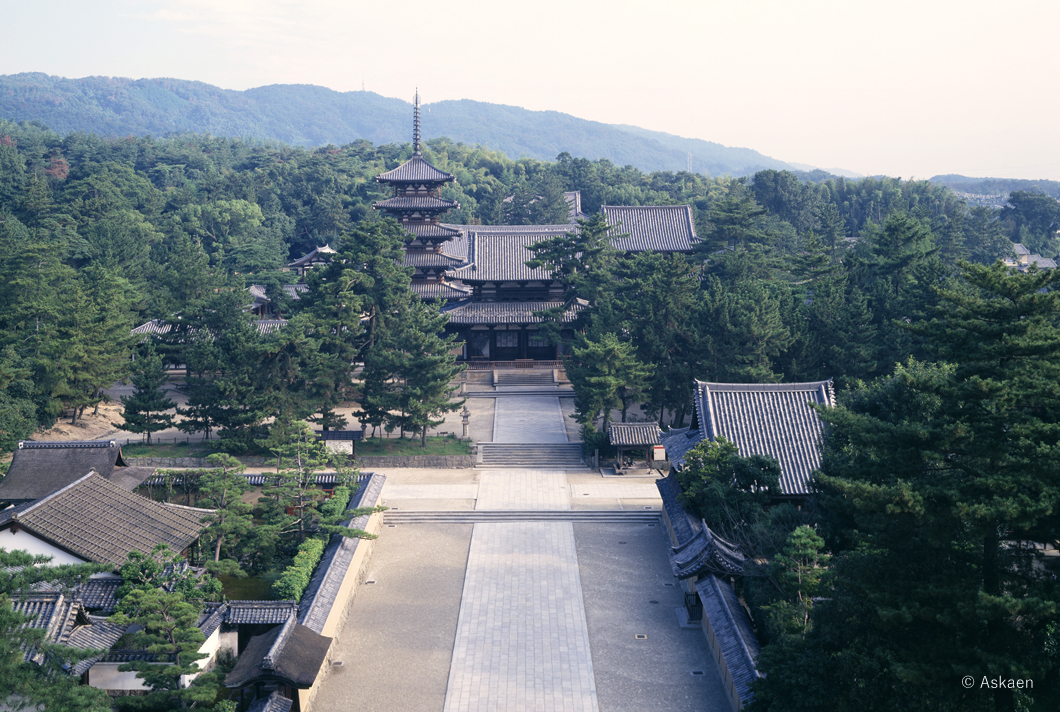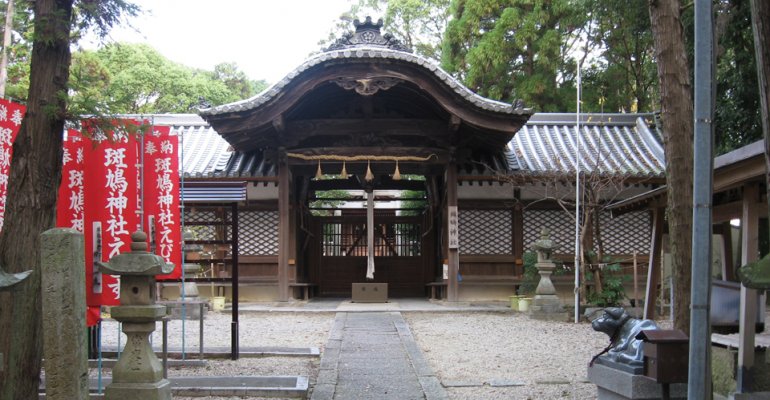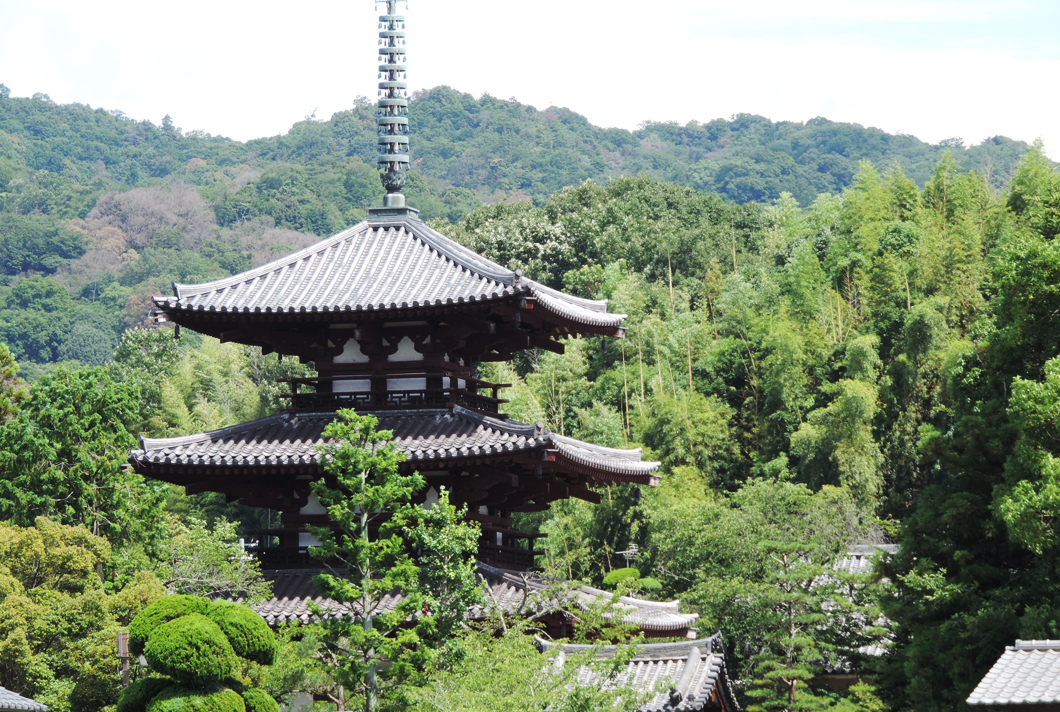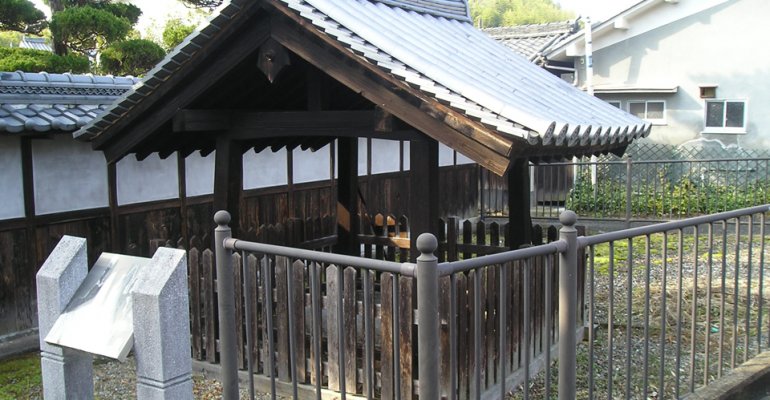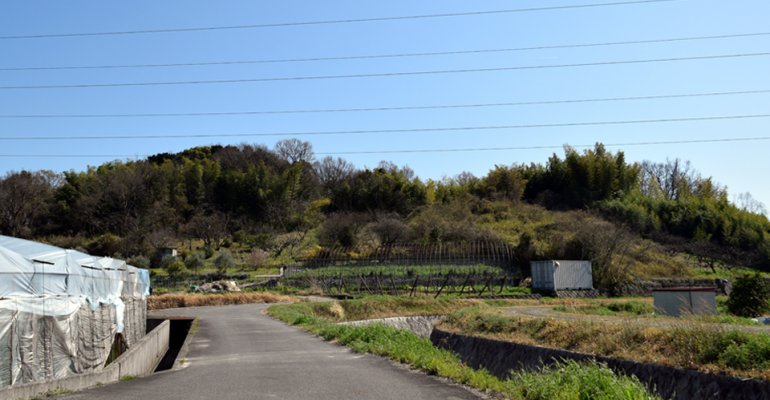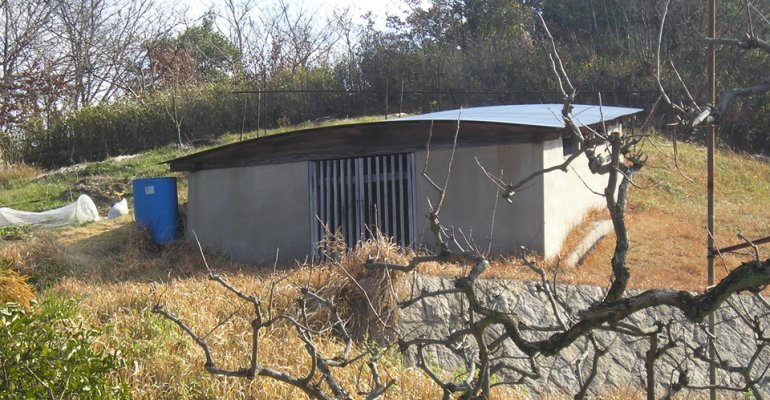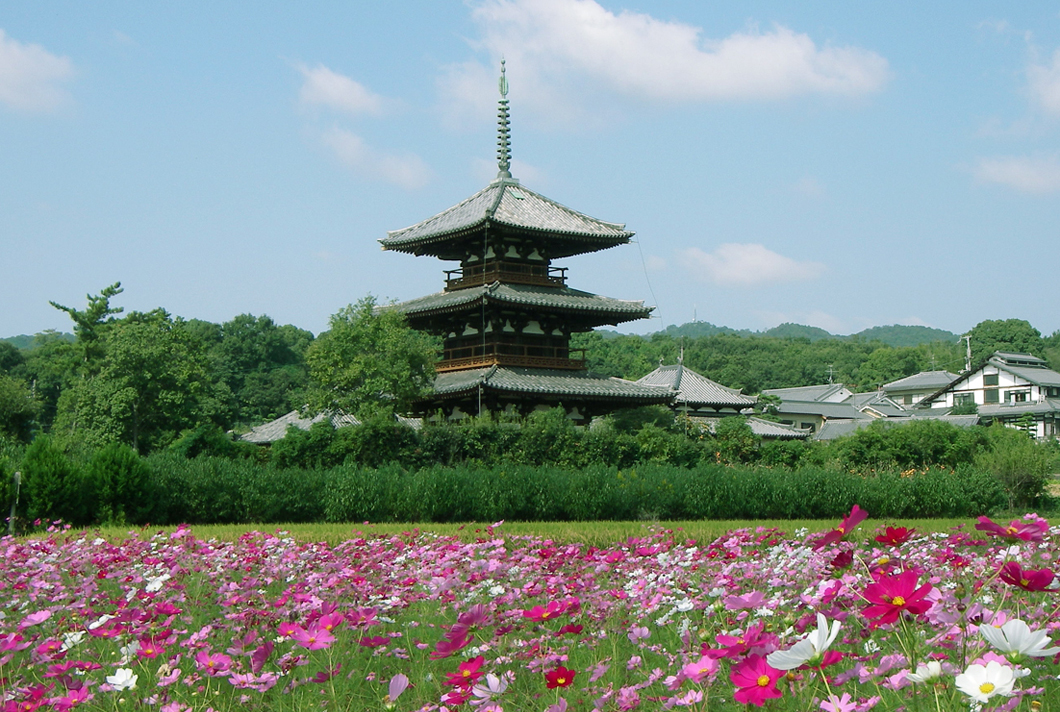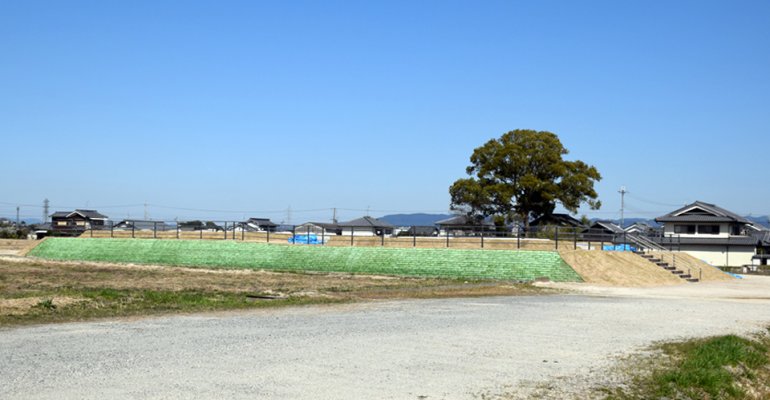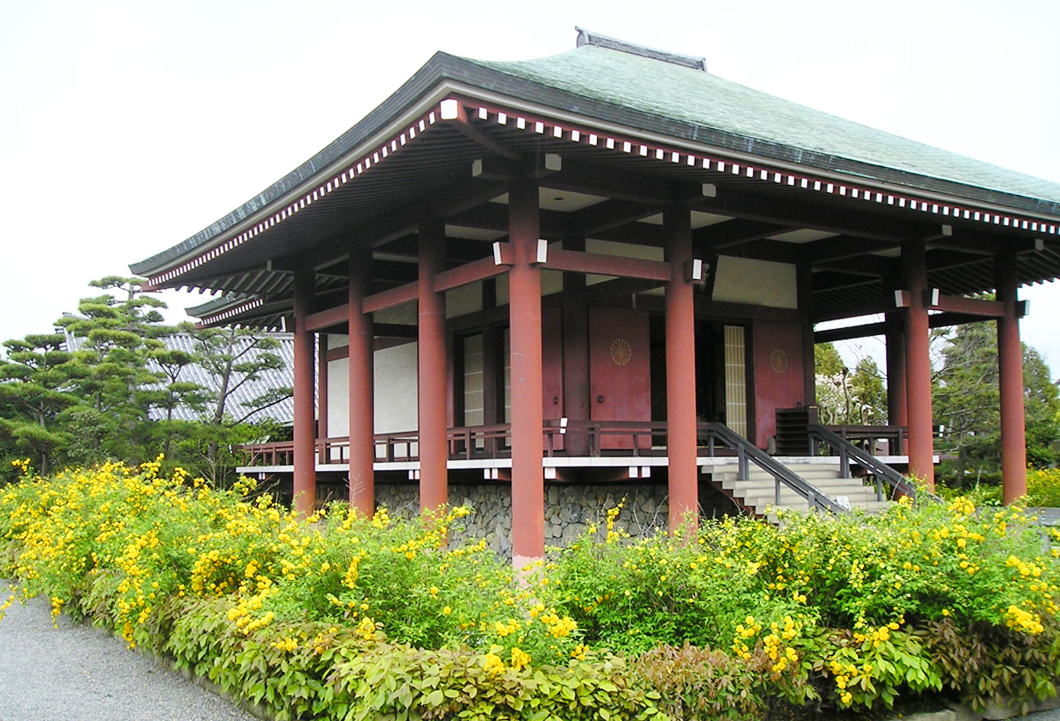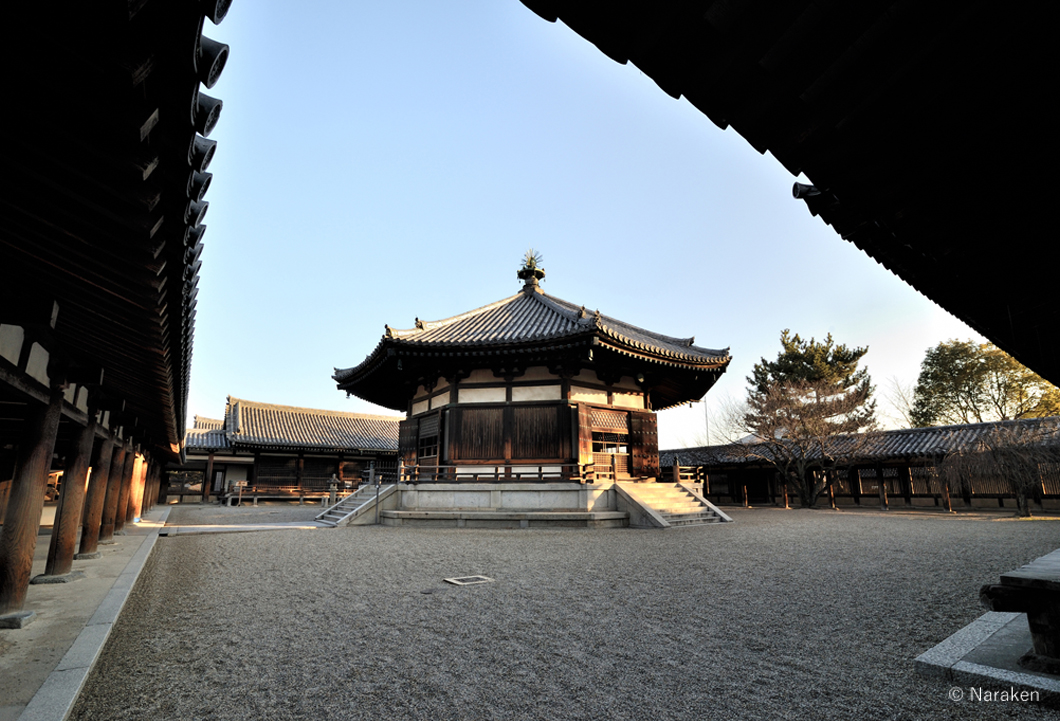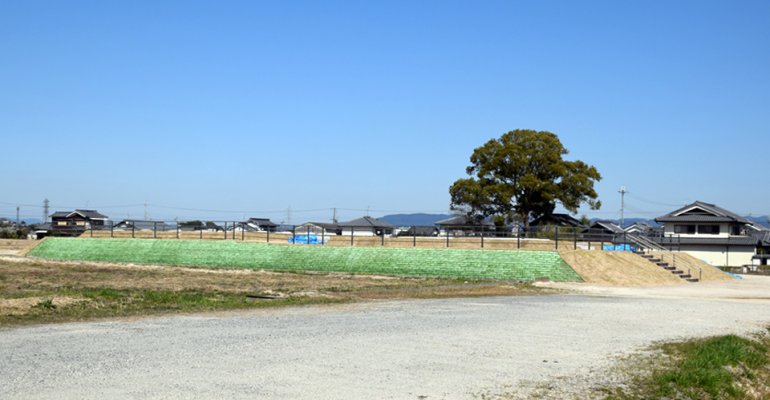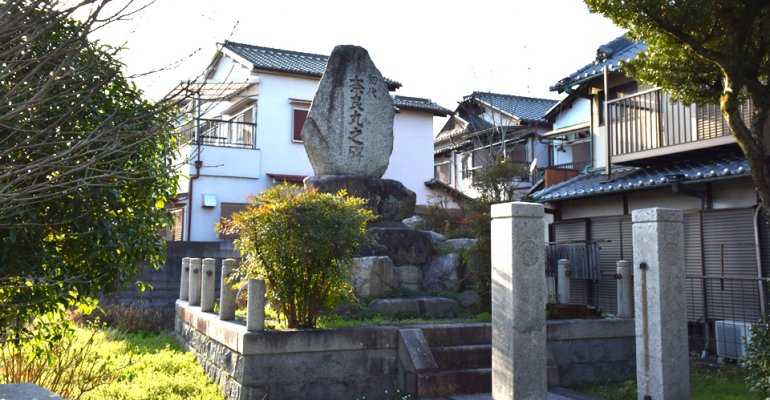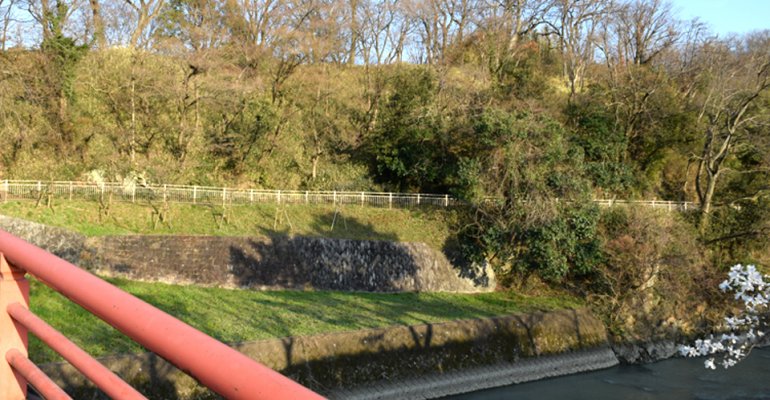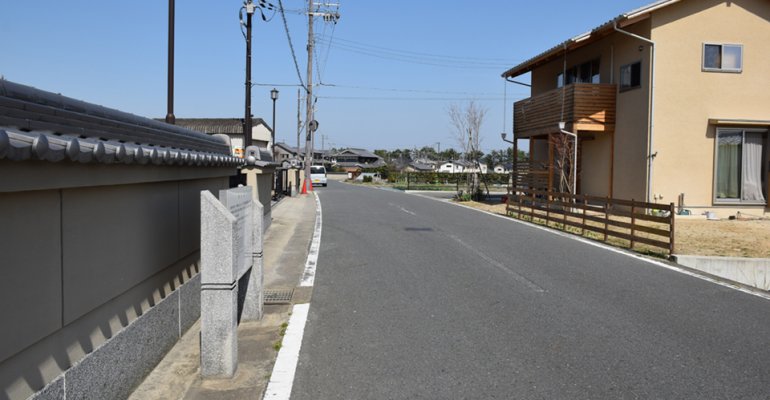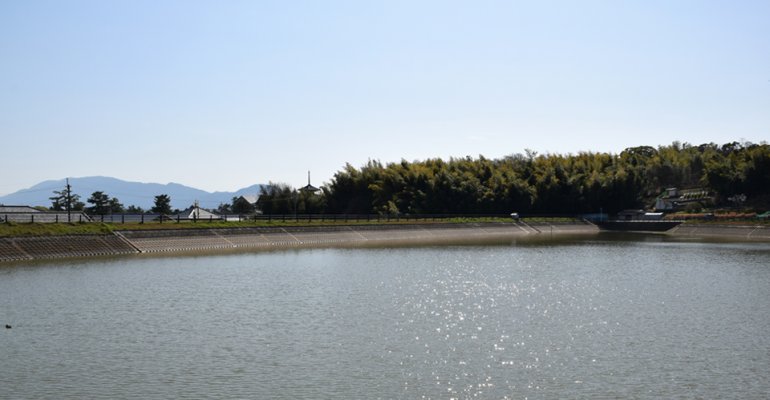Horyuji is known for having the oldest wooden buildings in the world and was first registered in the UNESCO World Cultural Heritage in Japan in 1993. Wooden buildings from around the 7th century of the
Horyuji temple have been repaired every few hundred years and cathedral has been maintained. The cypress which is used for the construction is the wood suitable for the climate of dense, crazy less Japan, and has been repaired in the form of removing only damaged place, and taking advantage of other large members as it is, and keeps the building exceeding 1000 years.
Also, the beautiful five-storey pagoda with a sense of stability is superior in the architectural structure, and there is no record of the collapse due to the earthquake in the earthquake power and Japan, and it is applied to the heart pillar system of the latest Japan radio Tower "Tokyo Sky Tree".









